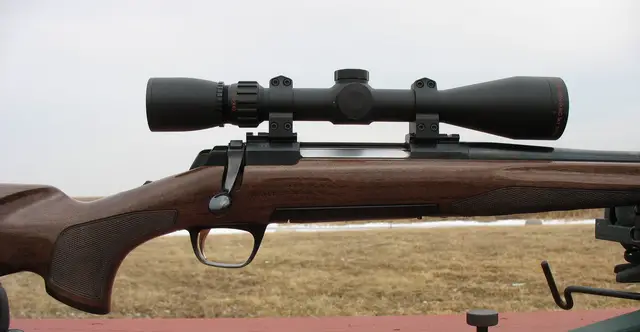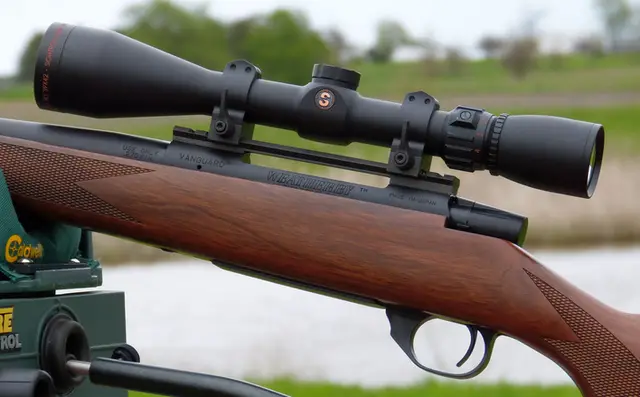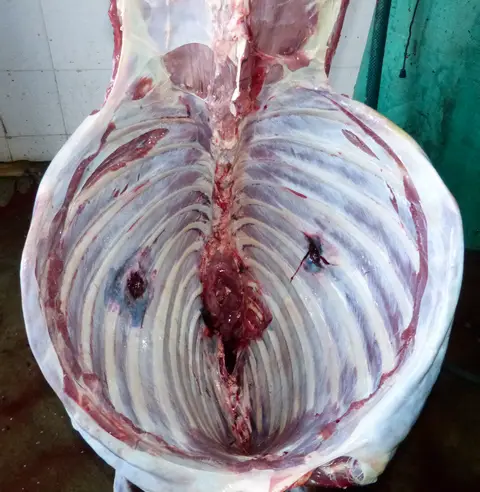
Cheap Bolt Action Rifle Mania


Chuck Hawks wrote this five years ago, in 2010.
“Most economy rifles are fundamentally cheap designs. By which I refer to such basic construction features as barrels pinned (rather than threaded) into the receiver, receivers drilled from round bar stock with an oval slot for an ejection port, "washer" recoil lugs trapped between barrel and action, multi-piece assembled bolts, stamped sheet metal internal parts, non-adjustable triggers, sliding or clip-style bolt face extractors, blind magazines or cheaply made detachable box magazines, sheet metal or "molded into the plastic stock" trigger guards, low-grade (matte) metal finish and, of course, the cheapest possible plastic stocks.
The Vanguard Synthetic is different from its competition in that it is based on a high quality barreled action with a matte finish and a cheap stock. The Vanguard line began life many years ago as a Weatherby Deluxe style rifle chambered for standard, rather than Weatherby Magnum, cartridges. Polish and high luster blue the Synthetic's barreled action and drop it in a nice stock and, presto, a deluxe rifle is born, or reborn. The Vanguard action is becoming popular with custom rifle builders, and for good reason. Note the contrast to the rifles described in the paragraph above: replaceable barrel threaded solidly into receiver; flat bottom receiver with integral recoil lug machined from billet steel and generous, open top, loading/ejection port; one-piece bolt machined from billet steel; generous M-16 style claw extractor; fully adjustable trigger; one-piece aluminum alloy bottom metal with hinged magazine floor plate. The Vanguard Synthetic really has only a dull metal finish and a plastic, throwaway stock in common with other economy rifles and both are easily remedied.”
Many folks are fervently price-loyal, not brand loyal. Perhaps that is why I receive thousands of e-mails every year asking if “xxx is any good?” Firearms don't come in nice, clean, tidy versions of good and bad: it is a long series of compromises. There is always interest in low-cost fodder and I understand that. Yet, if you are a hunter, you will not wear out a good grade of center fire rifle or shotgun in a hunting lifetime with just ordinary care. The cost of the gun is trivial compared to food, travel, lodging, licenses, and other fees. Nobody gets a discount on ammo or a hunting license just because they have a cheap firearm. When we buy a cheap gun and decide we want better, of course it has little value. It was a low-value item when new, so of course its used value is less than low. Too soon we get old, too late we get smart.
We can hardly blame manufacturers for continuing to built what we continually vote for with our purchase dollars. The design parameters of modern firearms are to meet price-points, not to be good. Firearms are designed to sell, just like everything else. Firearm companies are hardly immune from business fundamentals.
The weak point of many center-fire rifles is the stock. How can blame a firearm manufacturer for using a few cents of melted milk jug / ground up garbage can material instead of selected, cured, and machined walnut? The term “bedding” is used quite loosely, for example the “pillar bedding” bragged about in Savage rifles is not bedding at all, nor is are they pillars: they are merely tubes. Nor does bedding make great sense when the stock material being “bedded” to has excessive flex. When a barreled action moves around in a stock, a high level of repeatable, long-term, all-weather accuracy is not expected.
But, ammunition has improved, and barrel quality has improved to the point where, with low-intensity or medium intensity cartridges, MOA accuracy is not a problem. The recently reviewed Mossberg Patriot shot one inch at 100 yards, the cheap (by Browning standards) AB3 three shots into 1/10th of one inch, and both the Savage 110 AccuStock and Weatherby Vanguard shot inside an inch with several brands of ammunition. All of these rifles are economical, all tested rifles were in .270 Winchester. Cheap and “economical” are relative terms, for the Nosler M48 Patriot retails for $1798. Comparatively, the extremely beautiful and beautifully made Winchester Model 70 Super Grade is economical at $1359 MSRP. A Model 70 Featherweight at $939 is just a mid-range rifle in the grand scheme of things, as is my personal favorite, the Browning X-Bolt Medallion, currently at $1039. The X-Bolt Hunter at $899 is the same rifle, just a bit lesser grade of walnut and bluing. Yet, the AB3 Hunter, Browning's price-point rifle, at $669 is apparently at a price level that consumers want. The tested AB3 (synthetic) is at $599 and all of these rifles are significantly discounted from retail, there are rebates, etc., as well.


Prior to the last trip to South Africa, we were especially motivated to find the best bolt-guns to take based on handling, fit, action smoothness, feeding, ejection, and repeatable field accuracy. The finalists were a Weatherby Sporter and a Browning X-Bolt Medallion, both chambered in .270 Winchester. The X-Bolt shot inside one inch at 205 yards with Hornady Superformance 130 grain InterBond ammo and that's the combination I used. The X-Bolt shot inside one inch at 205 yards with Hornady Superformance 130 grain InterBond ammo. Despite the shorter than 24 inch standard barrel of the X-Bolt (22 inch) the velocity didn't fall off enough to make it of consequence still at a very peppy 3125 fps or so 3 foot instrumental velocity.
For the animals of potential interest, fallow deer, waterbuck, red hartebeest, blue wildebeest, and black wildebeest to 325 yards or so, several rifles and cartridges would have been suitable. In fact, a Savage American Classic in 7mm-08 shot so well, it was tempting, but the reduced drop and windage from the ballistically better .270 Winchester ammunition was too significant of a difference to disregard.
The X-Bolt and the Weatherby didn't at all like the same ammunition; not much surprise there. Although the Weatherby shot the 140 grain Winchester AccuBonds (140 grain, 2950 fps) at 7/8 inch at 100 yards, it did marginally but still noticeably better with a late arrival, the new Federal Trophy Copper P270TC1 load. At 3060 fps with a published static ballistic coefficient of .459, it is still a relatively flat shooter, about 6.3 inches of drop from 200 - 300 yards with a 200 yard zero, .6 inch less than the slightly heavier and slower Accubond. One of the tested cartridges that shot well in the Weatherby (but not the Browning) was the 150 grain Winchester Power Max Bonded protected hollow point. Despite its accuracy, the drop from 200 - 300 yards is about eight inches, with uninspiring wind drift to go along with it.
As the Weatherby does have a 24 inch barrel, there is no significant velocity loss from published data based on the same barrel length. I wouldn't expect the dramatic cavitation from the Trophy Copper as you might from the InterBond, yet the bullet has an almost identical B.C. to the Hornady, while the Hornady does have a better launch velocity. It wasn't any real choice, for as much as the X-Bolt loved the Hornady, the Weatherby did not, so the Federal TC won out when paired with the Vanguard. Your results will vary.
Neither of the rifles we finally selected were custom rifles, nor were they particularly expensive. Strictly mid-range to slightly upscale is about where they reside. Nevertheless, the practice paid off for it was five shots and five trophies when it was all over with. I'm hardly one to spend money without need, as I generally squander my money on food and shelter. Nevertheless, a cheap rifle loses its initial, fleeting glow quite quickly. When you test twenty center-fires a year for many years, it is very hard to get excited about downgraded product.

The Hornady 130 grain InterBond, that had already displayed impressive deformation and cavitation on the much lighter white Blesbok, did a superlative job on the blue wildebeest past 300 yards, as well making a large wound track the entire width of the animal, having more penetration than needed as the bullet easily exited.

Copyright 2015 by Randy Wakeman. All Rights Reserved.











